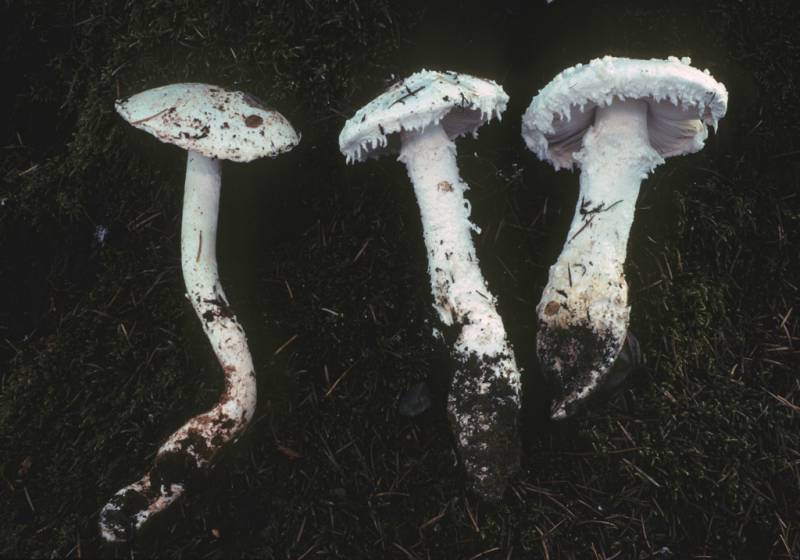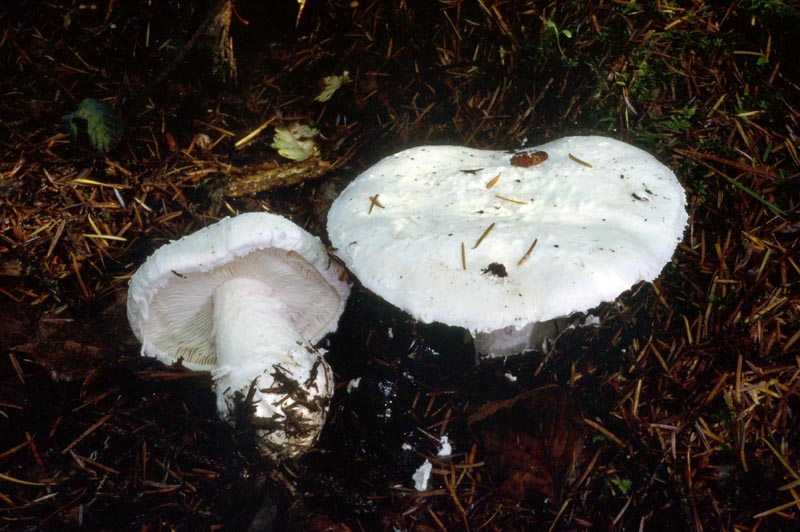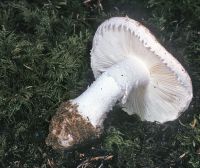Habitat: It occurs in conifer and mixed woods and has been reported with a variety of tree hosts including alder.
Substrate: Leaf litter and soil
Conservation Status: Not of concern
Edibility: The edibility of A. silvicola is uncertain, but its close relationship to A. smithiana should preclude anyone from eating it.
The edibility of A. silvicola is uncertain, but its close relationship to A. smithiana should preclude anyone from eating it.
Amanita smithiana features a small to medium-sized cap and long rooting stipe that is enlarged at the point where it enters the substrate (either soil or well-rotted wood). The outer veil leaves a coating on the cap, sometimes on the cap edge, and around the enlarged portion of the stipe. The fills are close to crowded, whitish or slightly pinkish. As in A. silvicola the lower stipe is coated with a soft white covering that comes off if you touch it. The pArtial veil is fragile and leaves a ragged, floccose zone on the upper stipe.
Sources: Trudell, Steve and Joe Ammirati. Mushrooms of the Pacific Northwest. Portland, Timber Press, Inc. 2009.
PNW Herbaria: Specimen records of Amanita silvicola in the Consortium of Pacific Northwest Herbaria database.
CalPhotos: Amanita silvicola photos.









